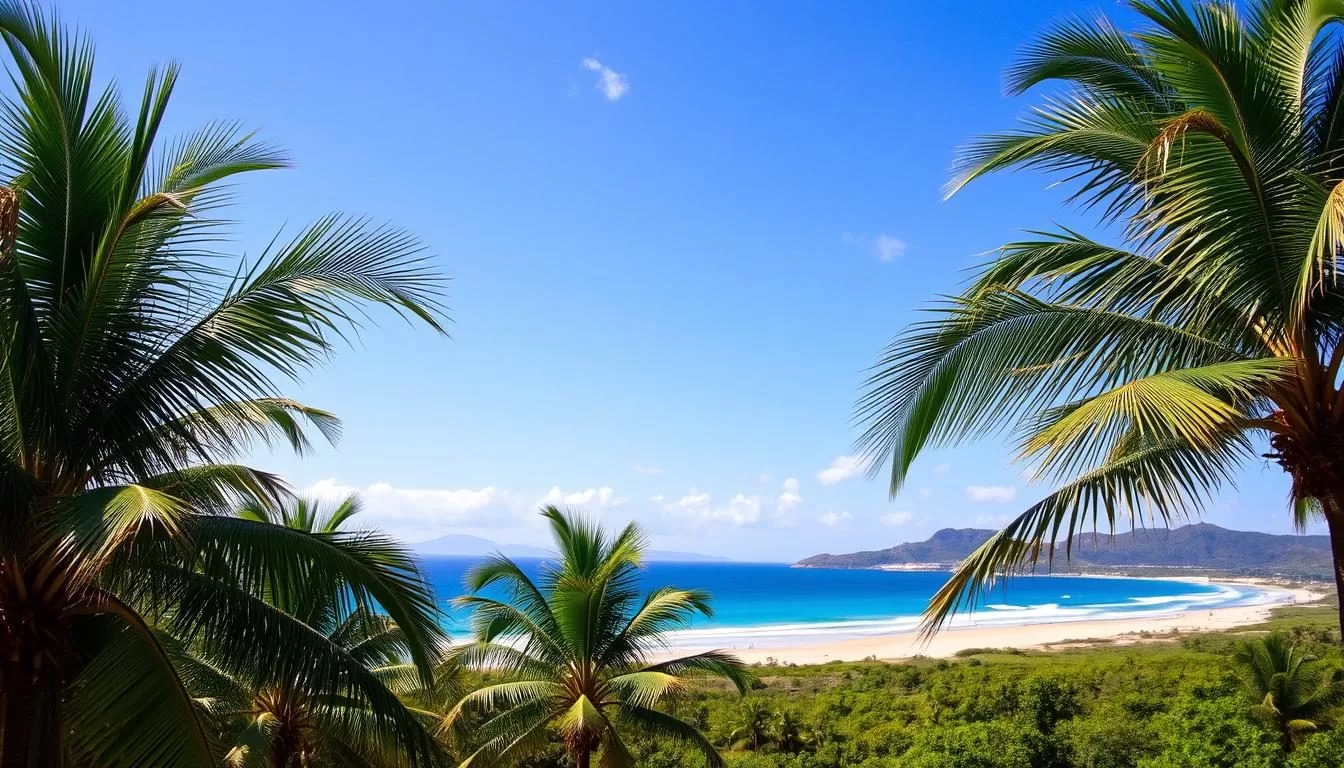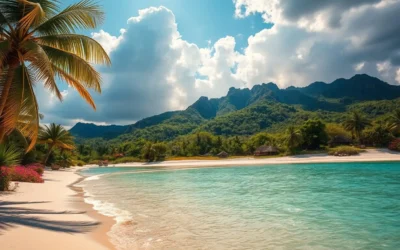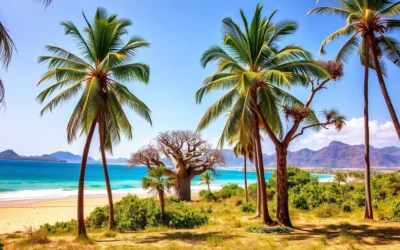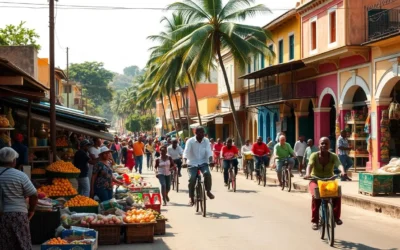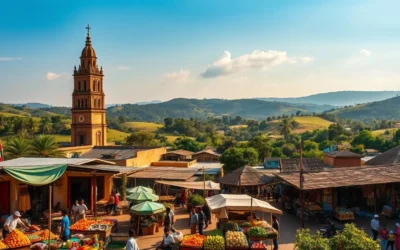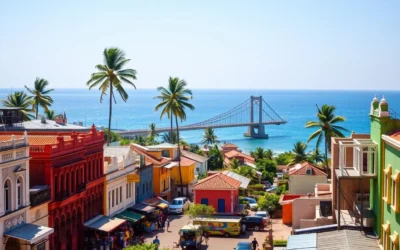Planning a trip to Mozambique can be a daunting task, especially when considering the diverse climate experience it offers throughout the year. Understanding the country’s weather patterns is crucial for a perfect vacation, whether you’re looking to relax on the beach, explore wildlife, or immerse yourself in cultural experiences.
The country’s extensive 2,500km coastline along the Indian Ocean creates unique microclimates, making the timing of your visit critical. To make the most of your experience, it’s essential to navigate the distinct wet and dry seasons.
By determining the ideal time to visit, you can enjoy optimal conditions for activities like diving, safaris, and beach holidays. This guide will help you plan your trip strategically, ensuring a memorable adventure in this beautiful country.
Understanding Mozambique’s Climate Patterns
Understanding the climate patterns in Mozambique is essential for planning a trip that suits your preferences. Mozambique’s climate is diverse, with varying conditions across different regions.
Tropical Climate Zones of Mozambique
Mozambique spans across various tropical climate zones, with the coastal regions experiencing a different climate compared to the inland areas. The southern regions generally receive less rainfall than the central and northern parts. Temperatures remain relatively consistent year-round, typically ranging from 25°C to 35°C (77°F to 95°F) during the day.
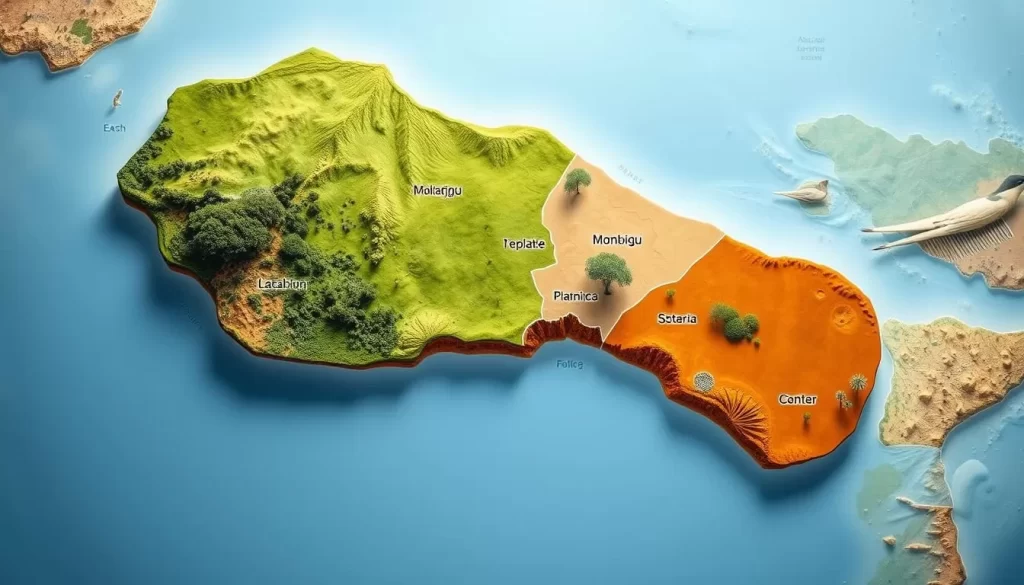
Wet and Dry Seasons: What to Expect
The country has two distinct seasons: a wet season and a dry season. The wet season, from November to April, brings higher humidity and regular afternoon thunderstorms, resulting in lush, green landscapes. In contrast, the dry season from May to October offers clearer skies, lower humidity, and cooler temperatures.
| Season | Months | Weather Conditions |
|---|---|---|
| Wet Season | November to April | Higher humidity, afternoon thunderstorms, lush landscapes |
| Dry Season | May to October | Clearer skies, lower humidity, cooler temperatures |
Understanding these seasonal patterns is crucial for planning activities, as certain regions become difficult to access during the height of the rainy season. The transitional months between seasons often offer interesting weather conditions, with advantages of both seasons.
The Dry Season: May to October
Mozambique’s dry season offers a unique blend of comfortable weather and exciting wildlife viewing opportunities. This period, which spans from May to October, is considered the best time to visit Mozambique, especially for those interested in wildlife safaris.
Peak Wildlife Viewing Opportunities
During the dry season, animals congregate around limited water sources in national parks like Gorongosa and Niassa Reserve, making wildlife viewing much easier. The dry vegetation and clear skies enhance the overall safari experience.
- Wildlife congregates around water sources.
- Easy spotting due to thin vegetation.
- Optimal conditions for safari drives and walking tours.
Comfortable Temperatures and Clear Skies
Days are characterized by clear blue skies and comfortable temperatures, typically ranging from 22°C to 28°C (72°F to 82°F). However, nights can be cool, especially in July and August, when temperatures may drop to 10°C (50°F) in inland areas.
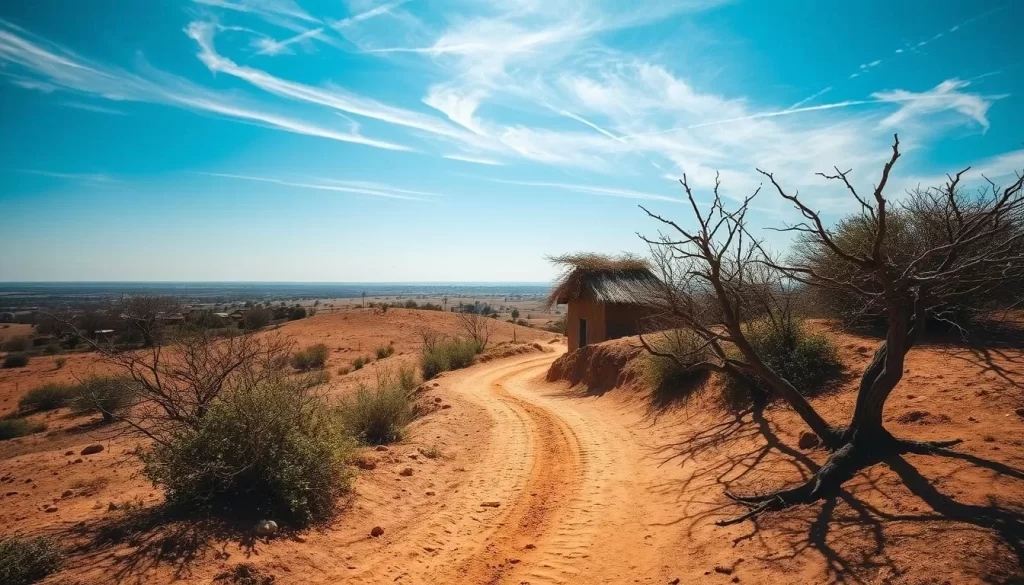
Tourism High Season Considerations
The dry season coincides with the tourism high season, particularly from July to September. It’s advisable to book safaris and accommodations in advance to avoid limited availability.
| Month | Temperature Range (°C) | Tourist Season |
|---|---|---|
| May | 22-28 | Start of Dry Season |
| July | 18-25 | Peak Tourist Season |
| October | 25-30 | End of Dry Season |
By understanding the characteristics of the dry season, you can plan a more enjoyable and stress-free trip to Mozambique.
The Wet Season: November to April
Mozambique’s wet season, spanning from November to April, offers a distinct experience for travelers. This period is characterized by significant rainfall, which transforms the country’s landscapes and ecosystems.

Lush Landscapes and Fewer Crowds
The wet season brings Mozambique to life, with lush green landscapes, blooming wildflowers, and flowing rivers. The vibrant scenery creates a dramatically different experience compared to the dry months. You’ll also encounter fewer tourists, making it easier to explore popular destinations without the crowds.
- The country’s natural beauty is on full display, with the rainforests, savannas, and grasslands rejuvenated by the rainfall.
- Morning activities and explorations are often still possible, as the rainfall typically occurs in short, intense afternoon downpours.
- With fewer tourists, you can enjoy a more authentic and peaceful experience at beaches, parks, and attractions.
Managing Rainfall and Humidity
While the wet season has its advantages, it also comes with higher temperatures and increased humidity, making conditions feel hotter. Temperatures average between 30°C and 35°C (86°F to 95°F). It’s essential to be prepared for the rain and potential challenges for road travel, especially in January and February when rainfall peaks.
Budget-Friendly Travel Opportunities
The wet season offers budget-friendly travel opportunities. Many lodges and resorts offer significant discounts, up to 30-40% compared to peak season prices. This makes it an attractive time for budget-conscious travelers. Additionally, the wet season coincides with turtle nesting season and is prime time for bird-watching, offering unique wildlife viewing opportunities.
Whether you’re looking for a peaceful getaway or an adventure, Mozambique’s wet season has something to offer. With the right preparation and mindset, you can enjoy the country’s lush landscapes, fewer crowds, and exciting wildlife experiences.
Mozambique: Best Months for a Weather-Savvy Trip
For travelers seeking optimal weather conditions, certain months stand out as particularly suitable for a Mozambique vacation. The country’s climate varies significantly throughout the year, making the choice of travel period crucial for a enjoyable experience.
April to June: The Sweet Spot
The period from April to June represents a sweet spot in Mozambique’s weather calendar. During this time, you can enjoy moderate temperatures and decreasing rainfall, making it an ideal period to visit. The landscape remains lush and green from the recent rains, yet the weather becomes increasingly stable with fewer precipitation events. May is particularly ideal as it combines the verdant scenery of the wet season with the clear skies and comfortable temperatures of the approaching dry season.
- Tourism numbers remain relatively low, allowing you to explore Mozambique’s attractions without the crowds.
- The weather conditions are favorable for various activities, including wildlife viewing and water sports.
September to October: Pre-Rain Perfection
September to October marks another excellent period to visit Mozambique. These months are characterized by warming temperatures ahead of the rainy season but still reliably dry conditions. This pre-rain period offers the best wildlife viewing opportunities as animals concentrate around dwindling water sources, making it ideal for safari experiences.
| Period | Weather Conditions | Ideal Activities |
|---|---|---|
| April to June | Moderate temperatures, decreasing rainfall | Wildlife viewing, water sports |
| September to October | Warming temperatures, dry conditions | Safari experiences, exploring national parks |
During these shoulder seasons, you can experience the best aspects of both the wet and dry seasons without the extremes. Water temperatures remain pleasant, ranging from 24°C to 26°C (75°F to 79°F), perfect for swimming, snorkeling, and diving experiences along the coast.
Regional Weather Guide: Where to Go When
From the coastal areas to the inland national parks, Mozambique’s regions have distinct weather profiles. Understanding these regional variations is key to planning your trip and making the most of your time in this beautiful country.
Coastal Mozambique: Maputo to Pemba
The coastal region of Mozambique, stretching from Maputo to Pemba, experiences a unique climate due to its proximity to the ocean. The southern coast around Maputo and Inhambane tends to be drier than the central and northern regions, making it a good option even during the fringe months of the wet season. If you’re looking for the best beaches in Mozambique, consider visiting Tofo, Bilene, or the Bazaruto Archipelago.
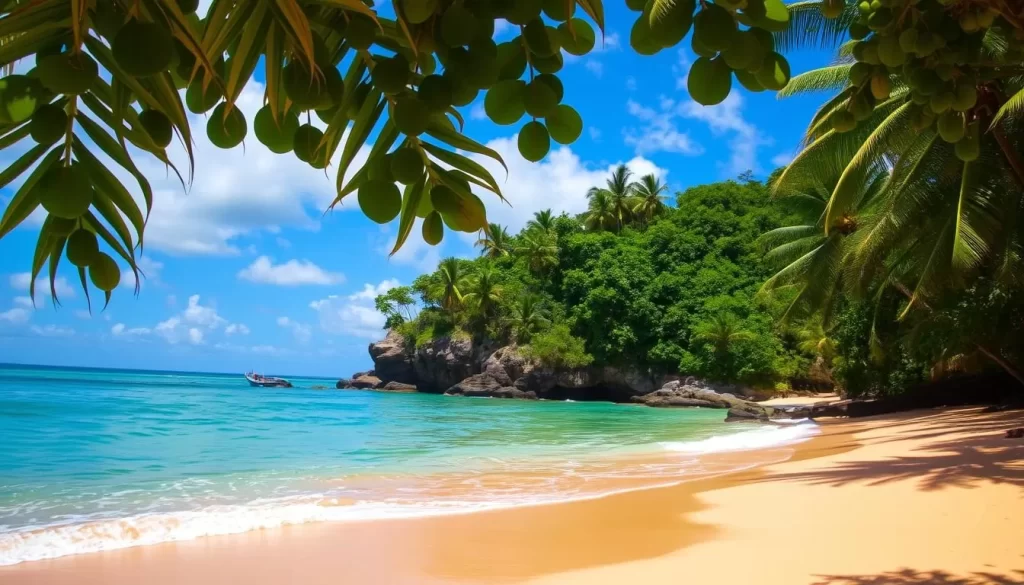
Inland Areas and National Parks
Inland national parks like Gorongosa experience more extreme temperature variations between day and night, particularly during the dry season when evening temperatures can drop significantly. The best time to visit Mozambique’s inland areas is during the mid-dry season (June-August) when wildlife viewing is optimal and temperatures remain comfortable. If you’re planning a safari, consider visiting Gorongosa or other national parks during this time.
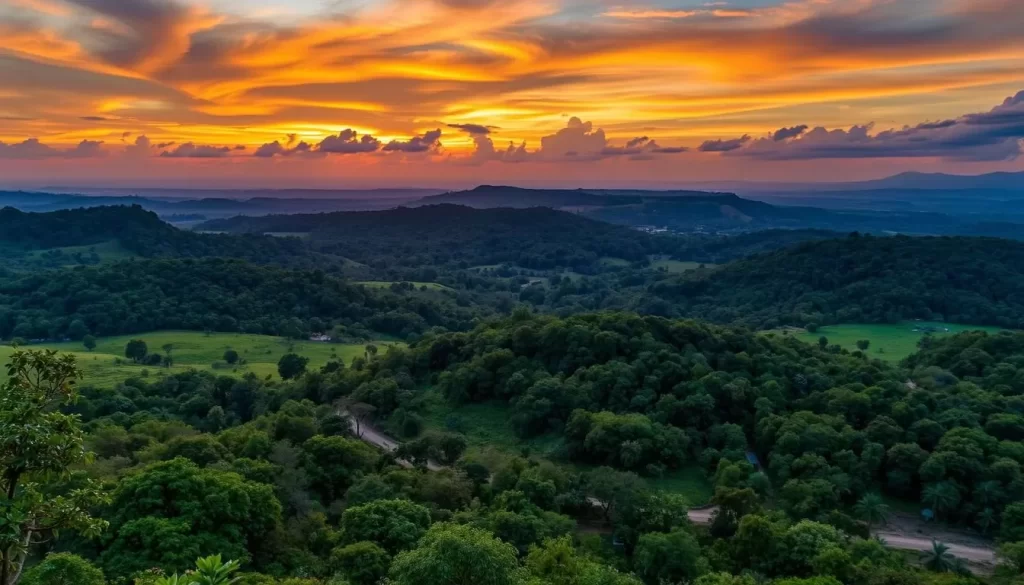
The Quirimbas and Bazaruto Archipelagos
The Quirimbas and Bazaruto Archipelagos offer year-round appeal, though the ideal months are April-June and September-November when winds are calmer and water visibility is at its best for diving and snorkeling. If you’re looking for a relaxing beach vacation or an exciting water sports adventure, consider visiting one of the many Mozambique island resorts in these archipelagos.

Each region’s unique weather patterns create different optimal visiting windows, allowing you to plan a trip to Mozambique during almost any month by selecting the right destinations. Whether you’re looking for a beach vacation, a safari, or an adventure in the national parks, understanding the regional weather guide will help you make the most of your time in this beautiful country.
Seasonal Activities and Experiences
The best time to visit Mozambique depends on what you want to do, with various activities and experiences available across different seasons. Whether you’re looking for wildlife encounters, beach relaxation, or cultural immersion, understanding the seasonal highlights can help you plan your trip.
Wildlife Safaris and Bird Watching
Mozambique is a haven for wildlife enthusiasts, with its national parks offering excellent safari opportunities. The dry season (May-October) is ideal for wildlife viewing as animals congregate around water sources, making them easier to spot. In contrast, the wet season (November-April) is perfect for bird watching, with over 600 species recorded throughout the country.
- Wildlife safaris are best during the dry season when animals gather around water sources.
- Bird watching peaks during the wet season with migratory species and breeding plumage on display.
Beach and Water Activities
Mozambique’s coastline offers a range of beach and water activities. While beach activities can be enjoyed year-round, the dry season provides more reliable weather. For water-based activities like diving and snorkeling, the periods between April-June and September-November offer the best visibility.
- Beach activities are enjoyable year-round, but the dry season is more reliable.
- Water-based activities like diving and snorkeling are best during April-June and September-November.
Cultural Festivals and Local Events
Mozambique’s cultural calendar is filled with vibrant festivals and local events. Many of these celebrations take place during the dry season, making it an ideal time for cultural immersion. You can experience the local culture by attending these events or simply interacting with the friendly people.
- Cultural festivals often coincide with the dry season, reducing the likelihood of rain disruptions.
- Local markets and community interactions are more vibrant during the dry season.
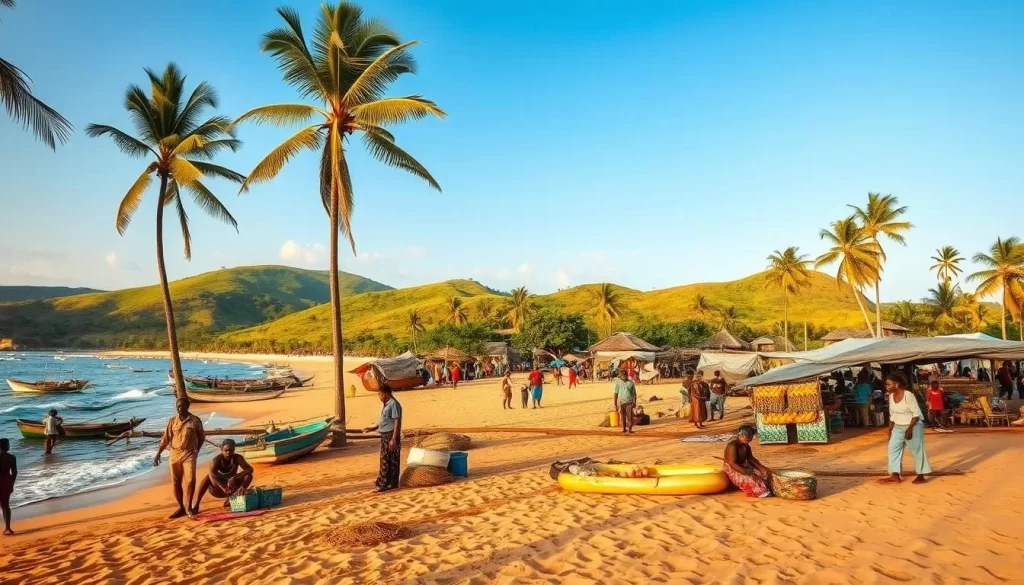
Conclusion
Mozambique’s diverse climate means the best time to visit depends on your preferences. Whether you’re a wildlife enthusiast or looking for a beach holiday, the country offers unique experiences throughout the year.
The above is subject to change.
Check back often to TRAVEL.COM for the latest travel tips and deals.
Here are some Tours & Sightseeing suggestions that might pique your interests!
